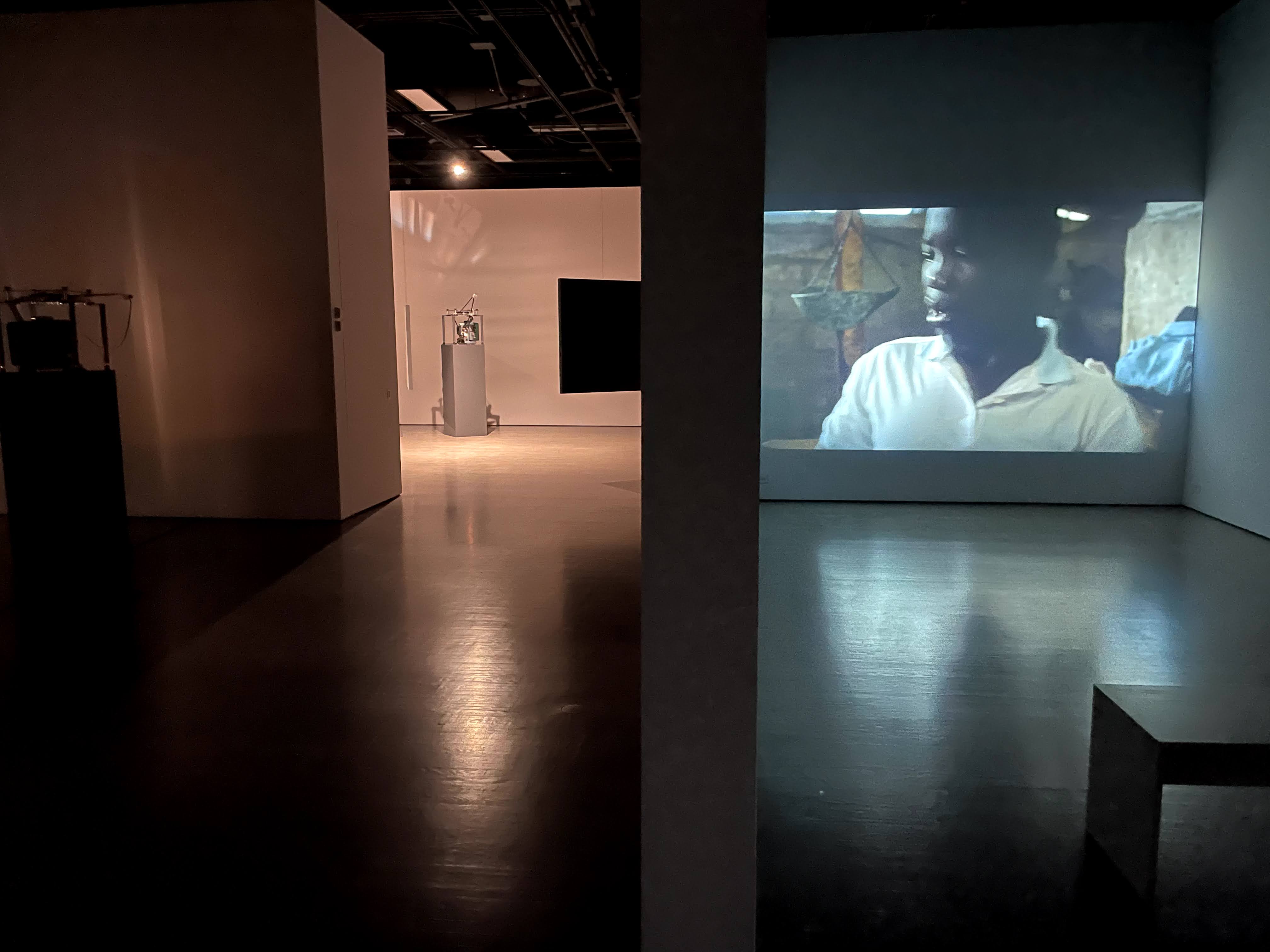Beatriz Santiago Muñoz’s exhibition reflects on the complex reality of Puerto Rico and adjacent communities in the aftermath of natural disasters, political disruption, and poetic disorder
Along with the excitement that comes from starting a new academic year, students also have reason to be excited about the reopening of Montreal’s cultural spaces. Excited as I was, I went to visit the Leonard & Bina Ellen Art Gallery’s newest exhibition, Poetic Disorder, the same morning it opened.
Presented in the context of MOMENTA Biennale de l’image, and within the theme of sensing nature, the exhibition by Puerto Rican artist Beatriz Santiago Muñoz takes over the entire gallery with four video projects. The exhibition is curated by Stefanie Hessler, in collaboration with Camille Georgeson-Usher, Maude Johnson, and Himali Singh Soin.
Each work, realized between 2014 and 2019, displays different facets, stories, and glimpses of life in the tropics through the sensitive, activistic lens of Santiago Muñoz. From specificity in daily life, like taking a nap in a hammock, to imaginative narratives blurring fiction and documentary, Poetic Disorder reveals the rich, wide existence and perspective of Caribbean life. The audience is challenged to see the world and these communities beyond colonialism and western thought.
Binaural is the first installation I encountered. In the dark, while my eyes adjusted, I was welcomed by a symphony of analogue projectors, emitting beams of light displaying silent videos on a loop onto four separate panels. These videos displayed a vertical horizon, a person resting on a hammock, a flickering light in a tunnel, and a view into the jungle.
When I reached the fourth video, I realized that Binaural extended to the next room on my right, featuring two more projectors. As I watched the last videos, I reflected on the artist’s intention to alter the perspective and the standpoint of the camera, noticing how this drew me in as both a spectator and as a Caribbean individual.
None of the videos last more than three minutes. Nor do they reveal much context. However, the collective narrative of the six-channel 16mm film installation says a lot. It made me think about the use of analogue processes as a vehicle to decolonize the foreign gaze, and reflect on Indigenous practices around sustainability, collaboration, land protection, resistance, and care.
I later learned that Santiago Muñoz shot these videos in Puerto Rico and the Solomon Islands, where she used the local flora to extract chemicals in order to develop the films. Amazed by this, I admired the work once more, reflecting on the power of nature and our responsibility to preserve it.
Walking to the left of the gallery, I encountered familiar imagery and sounds. I put on headphones for La Cabeza Mató a Todos, a seven-minute HD video, and heard the croaks of the coquí frog, a distinct and recognizable part of the Caribbean soundscape. The piece features a woman, played by artist and activist Mapenzi Chibale Nonó, and a cat (voiced by Nonó) engaging in what sounds like some sort of dialogue or spell-casting to end “the war machine.” This eerie scene is based on a local myth about a shooting star, alluding to ritualistic practices in co-existence with decolonial, feminist, and queer practices.
On the other side of the wall, I encountered Marché Salomon. This 16-minute HD video shows a dialogue between two young workers, Marcelin and Mardochelene, at a market in Port-au-Prince. A philosophical and mystical dialogue is surrounded by chopping sounds, hip hop, and “old technology” that is accompanied by dynamic camera work and the occasional voice interrupting the video with instructions to pay attention and “look.”
Finally, I went to the last room to watch Gosila. The piece is a “16mm film and HD video transferred to video and projected through a piece of lighthouse fresnel lens.” This creates a magical refraction of colours, distorting the image into a curved rectangle, and acts as a subtle nod to the devastation left by hurricanes Maria and Irma in 2017.
The following year was extremely difficult for Puerto Rico in every aspect, as it was left exposed politically, economically, and ecologically. By documenting the citizens and their small acts of care, reconstruction efforts, and the reclamation of their autonomy, the artist encourages us to think about the monsters we face both individually and as part of a community, and how to find light after the storm.
Before leaving the gallery, I was kindly greeted by the director of the gallery, Michèle Thériault, who conversed with me about Santiago Muñoz and her practice, sharing some afterthoughts about the curatorial experience.
After our conversation, I left the space with a lot to think and write about, confronting emotions of nostalgia and estrangement, with the motivation that, despite chaos, we shall find poetry in our everyday disorder.
Poetic Disorder is on display at the Leonard & Bina Ellen Art Gallery, located at 1400 De Maisonneuve Blvd. W. on the ground floor of the J.W. McConnell Building until Oct. 16.
Photo courtesy of María Escalona




